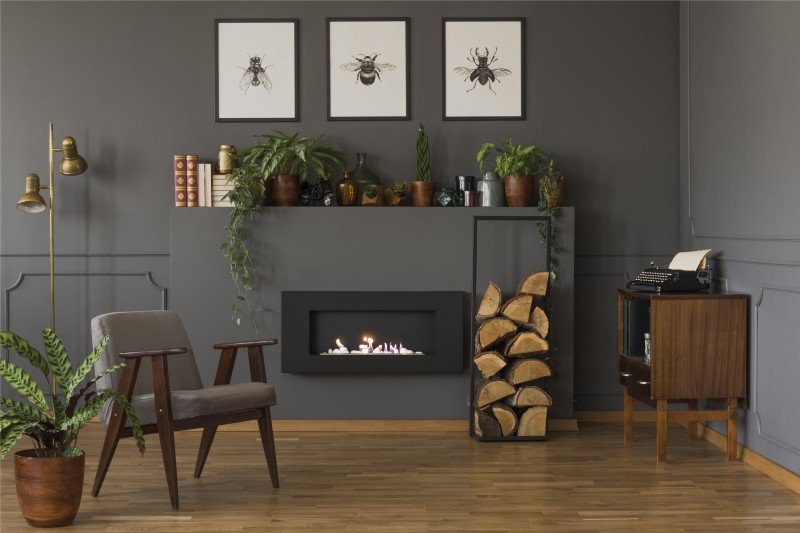The Charm and Functionality of Fireplaces: A Comprehensive Guide
Fireplaces have long been a central function in homes, symbolizing heat, companionship, and convenience. They come in numerous styles, materials, and fuel types, catering to the preferences and needs of diverse homeowners. Fireplace UK explores the multifaceted world of fireplaces, exploring their history, types, installation considerations, and maintenance pointers, while supplying FAQs to deal with typical questions.
A Brief History of Fireplaces
Historically, fireplaces worked as the foundation for cooking and heating homes. In ancient times, an open hearth was often positioned in the center of a house. Over centuries, architectural advancements facilitated the advancement of more sophisticated styles, evolving from basic stone structures to elaborate mantels that command modern living spaces.
Key Historical Milestones:
- Ancient Times: Open fires in caverns and primitive huts for heat and cooking.
- Middle Ages: Large, commonly centralized chimney structures in fantastic halls of castles.
- Renaissance: Decorative mantels and designs gain popularity, with the fireplace becoming a sign of wealth and status.
- Industrial Revolution: Advancements in materials and manufacturing enable a broader range of fireplace styles.
- Modern Era: Gas and electric fireplaces end up being commonplace, allowing for increased convenience and safety.
Kinds of Fireplaces
Today, numerous types of fireplaces are available, each with its special qualities. Below is a breakdown of the most typical types:
| Fireplace Type | Description | Pros | Cons |
|---|---|---|---|
| Wood-Burning | Traditional fireplaces sustained by wood. | Genuine experience, heat output. | Labor-intensive, needs correct venting/maintenance. |
| Gas | Fireplaces that use natural gas or propane. | Easy to utilize and keep. | Less ambiance compared to wood. |
| Electric | Uses electrical energy to generate heat and flames. | Safe, no venting required. | Limited heat output, greater energy expenses. |
| Bioethanol | Uses bioethanol fuel, producing tidy flames. | Eco-friendly, portable. | Requires regular refueling. |
| Pellet | Utilizes compressed wood pellets as fuel. | Tidy burning, sustainable. | Needs power for operation. |
Extra Considerations
When selecting a fireplace, it is necessary to consider factors such as:
- Fuel Availability: Consider what fuels are readily available in your location.
- Space and Aesthetics: The size of your living area and your style preferences must direct your choice.
- Building Regulations: Always consult local regulations to make sure compliance and safety.
Installation Considerations
Installing a fireplace involves more than merely putting a structure in your home. Luxury Fireplaces UK , expert input, and adherence to security codes are paramount. Here are some critical actions:
- Planning: Consider the size and type of fireplace, where it will be positioned, and its designated usage.
- Assessment: Hire a licensed professional to examine your home and make sure proper setup.
- Allows: Obtain any needed building licenses from local authorities.
- Products: Select proper materials for the fireplace and surrounding location. Ensure hop over to this web-site are fire-resistant and developed for your fuel type.
Upkeep Tips for Fireplaces
Regular maintenance ensures your fireplace runs securely and efficiently. Here are important maintenance ideas categorized by fireplace type:
Wood-Burning Fireplaces
- Chimney Cleaning: Have your chimney cleaned up yearly to avoid creosote accumulation.
- Check for Damage: Check for cracks and damage to the firebox and chimney structure.
- Fire wood Storage: Store firewood away from the home to prevent insect problems.
Gas Fireplaces
- Log Inspection: Regularly examine ceramic logs for cracks and change if required.
- Vent Cleaning: Ensure that vents are totally free from obstructions.
- Pilot Light Check: Test pilot lights and ignition systems routinely.
Electric Fireplaces
- Cord Inspection: Frequently check electrical cables for fraying or use.
- Tidy Surfaces: Wipe down surface areas frequently to get rid of dust and particles.
- Smoke Detectors: Ensure smoke detectors in the vicinity are functional.
Bioethanol and Pellet Fireplaces
- Fuel Storage: Store fuels in a cool, dry place away from direct sunlight.
- Routine Refueling: Monitor fuel levels and refuel as needed.
- Ventilation: Ensure correct ventilation when using these fireplaces.
FAQs About Fireplaces
Q1: Do I need a permit to install a fireplace?
Yes, most municipalities require authorizations for fireplace installations to make sure security and compliance with local building regulations.
Q2: How typically should I clean my chimney?
It is advised to have your chimney cleaned up at least once a year, specifically if you utilize your fireplace frequently.
Q3: Can I transform a wood-burning fireplace to gas?
Yes, numerous homeowners convert wood-burning fireplaces to gas for benefit, but seeking advice from an expert is advisable to guarantee a correct conversion.
Q4: Do electric fireplaces produce heat?
Yes, electric fireplaces can produce heat; nevertheless, their main function is often for ambiance, making them an ideal option for those who desire a fire look without comprehensive heating.
Q5: Are bioethanol fireplaces safe?
Bioethanol fireplaces are generally safe when used correctly; however, they require correct ventilation, and users need to follow all maker standards.
Fireplaces not only add aesthetic attract homes however likewise offer useful heating solutions. With various types, styles, and upkeep requirements, house owners can make informed options that best suit their requirements and lifestyles. Whether going with the beauty of a wood-burning fireplace or the benefit of a gas design, a fireplace can considerably improve a home's comfort and environment. As the hearth remains a centerpiece in homes, it continues to foster warmth, discussion, and connections amongst household and friends.

